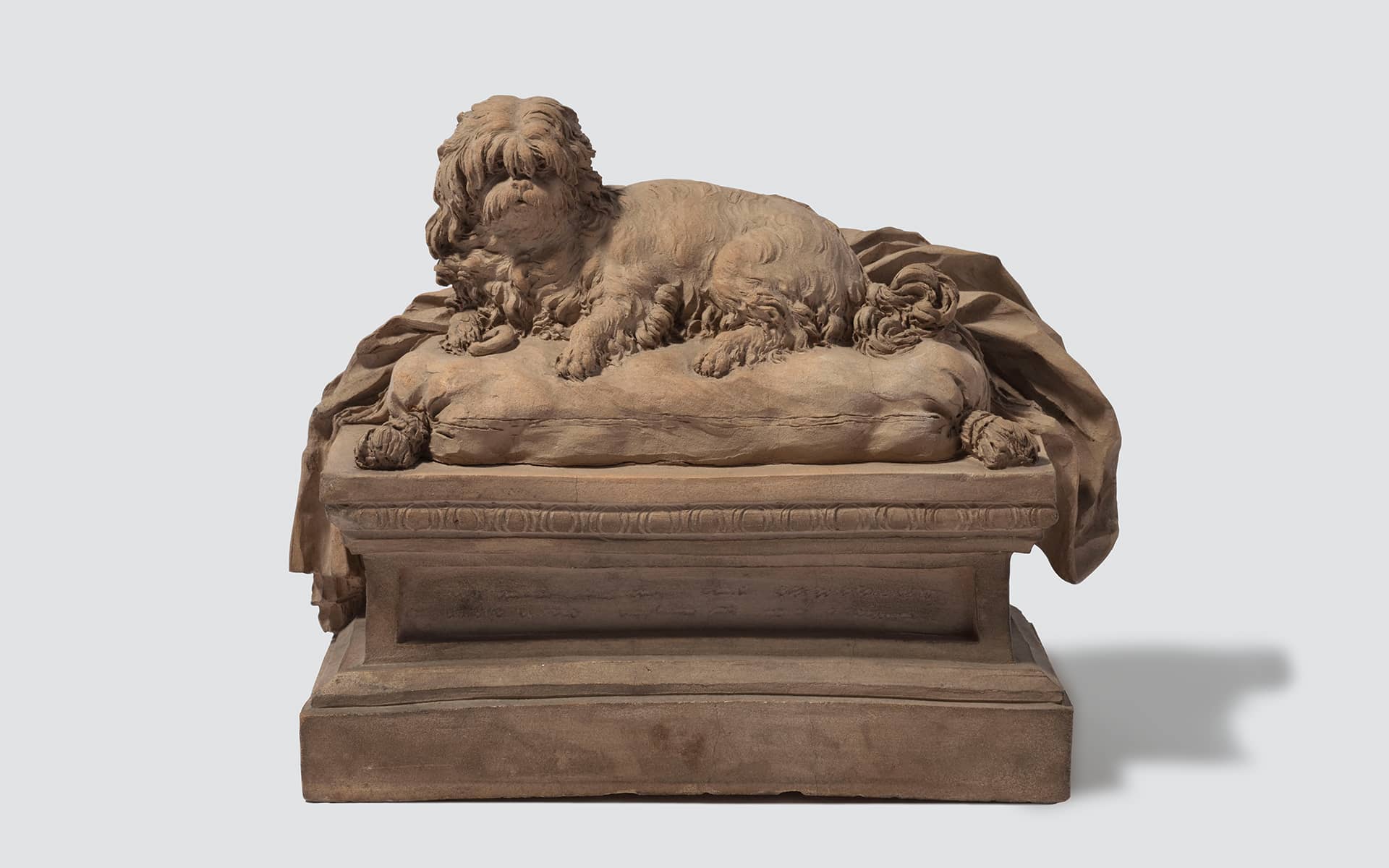
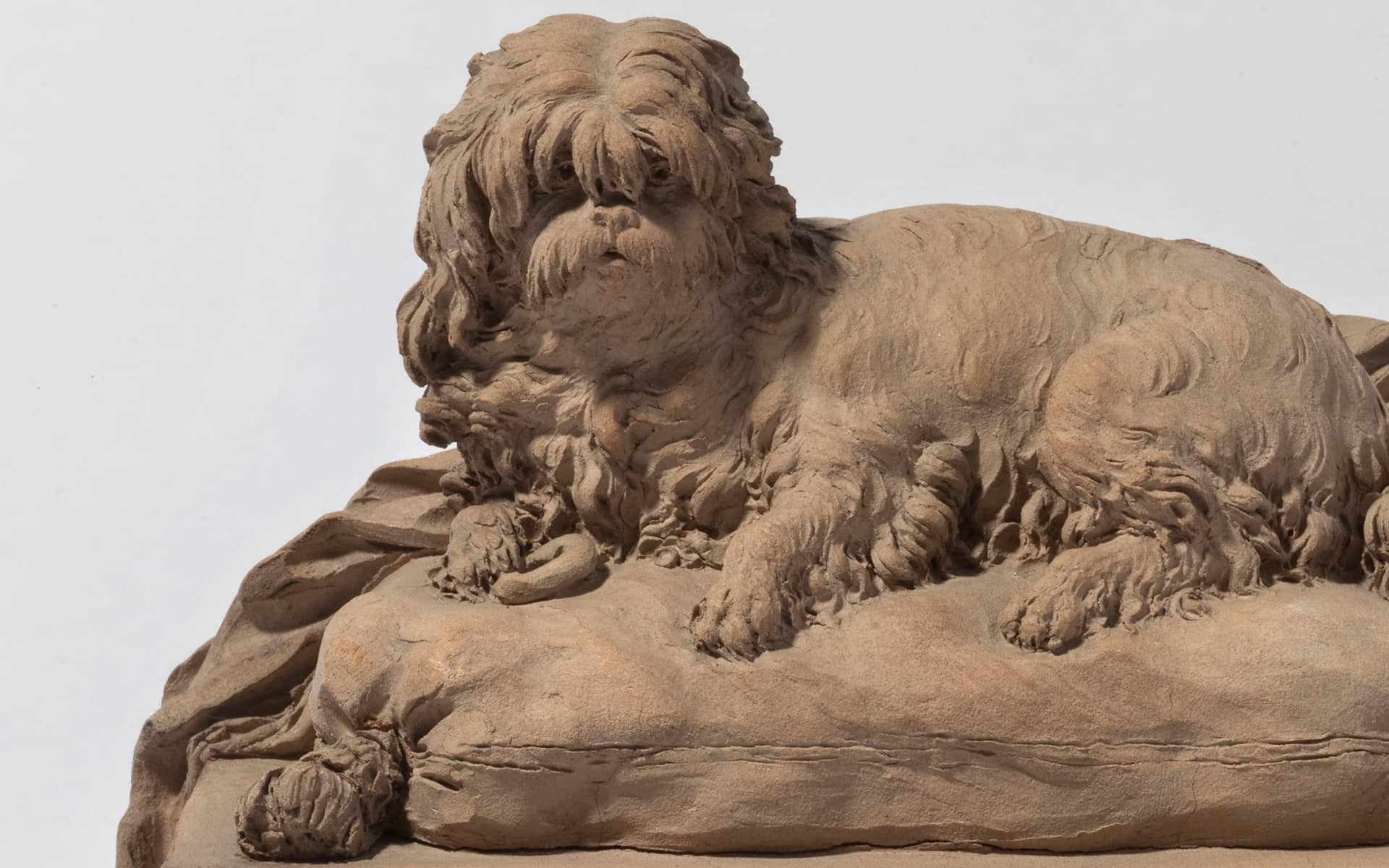
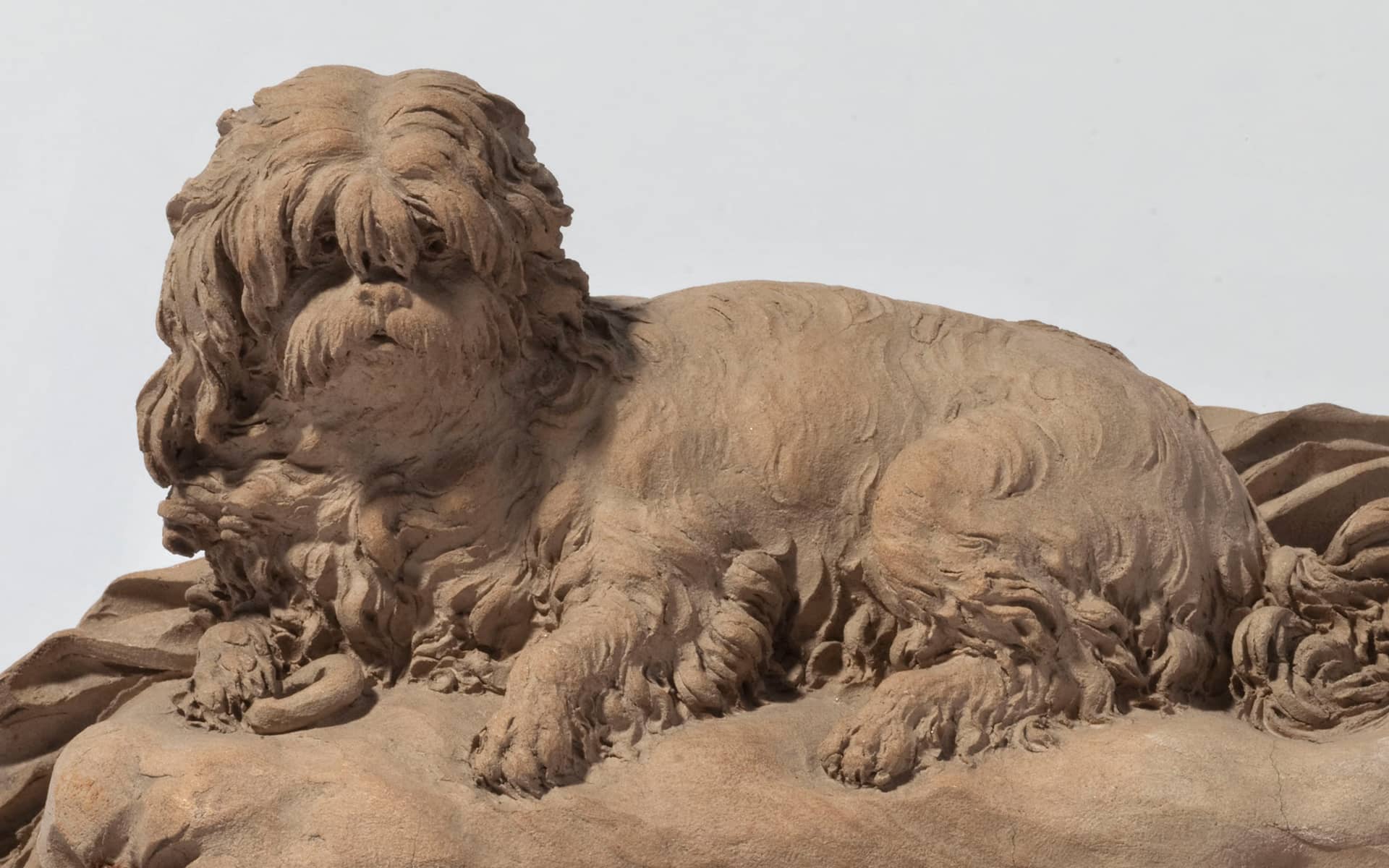
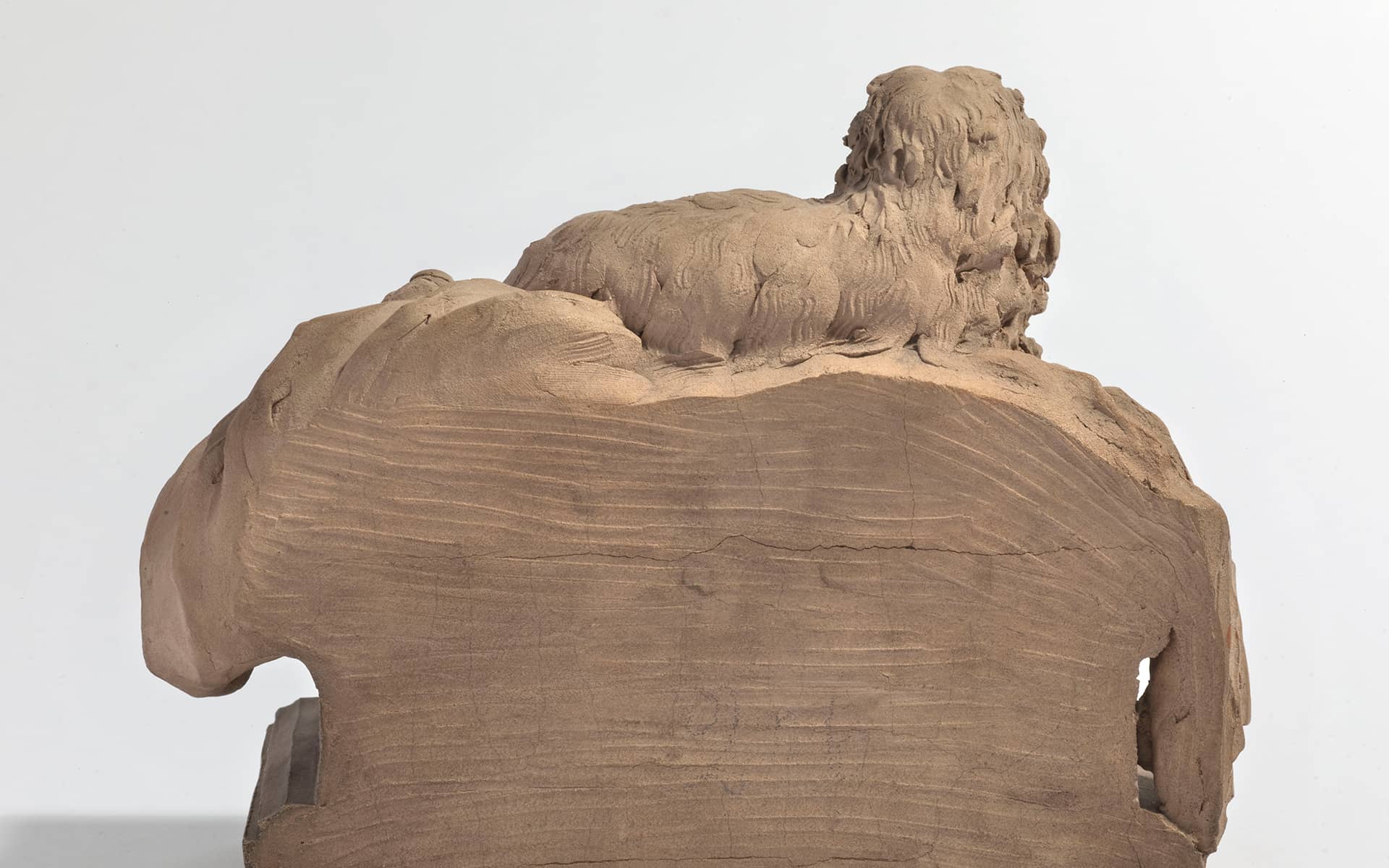
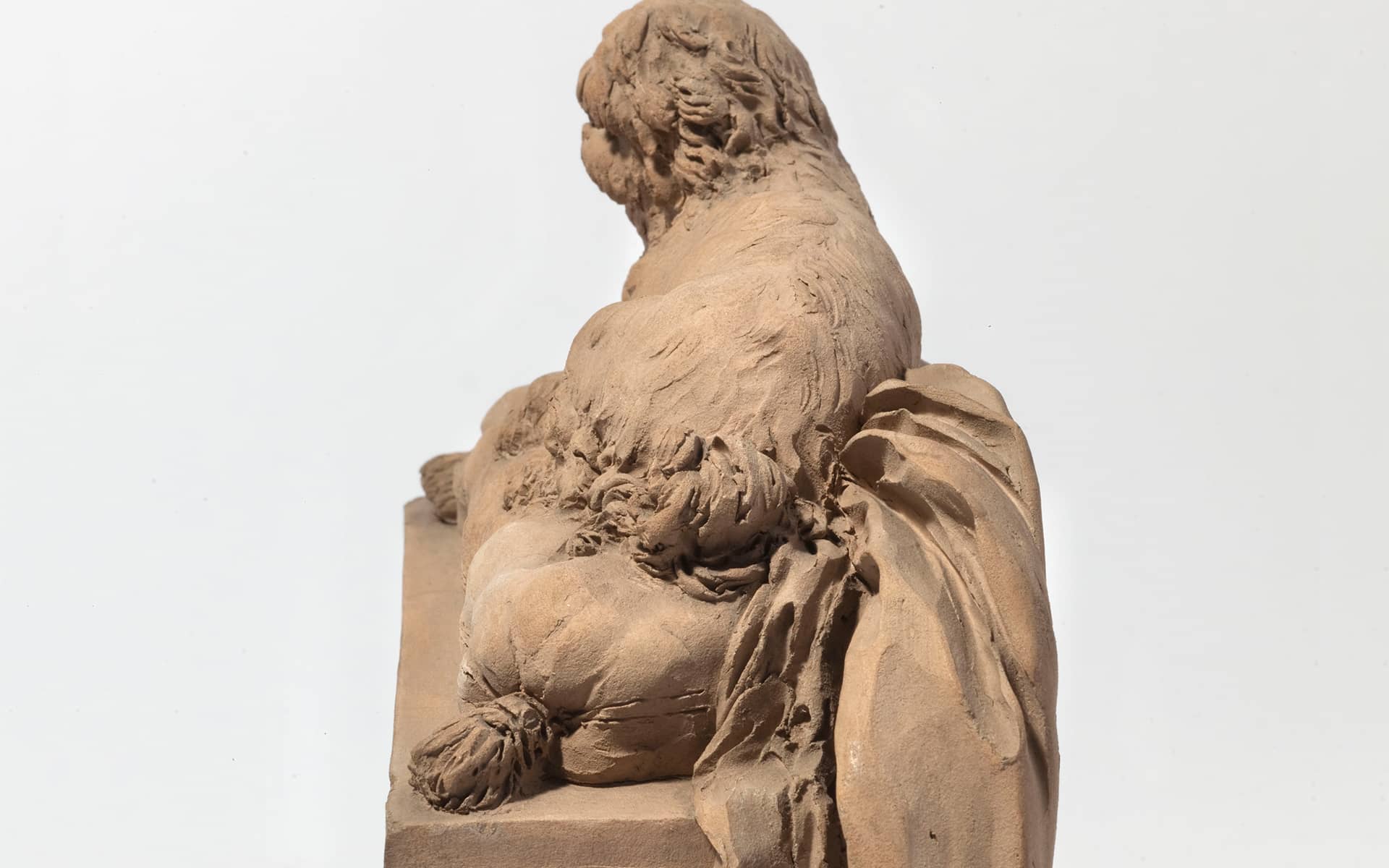
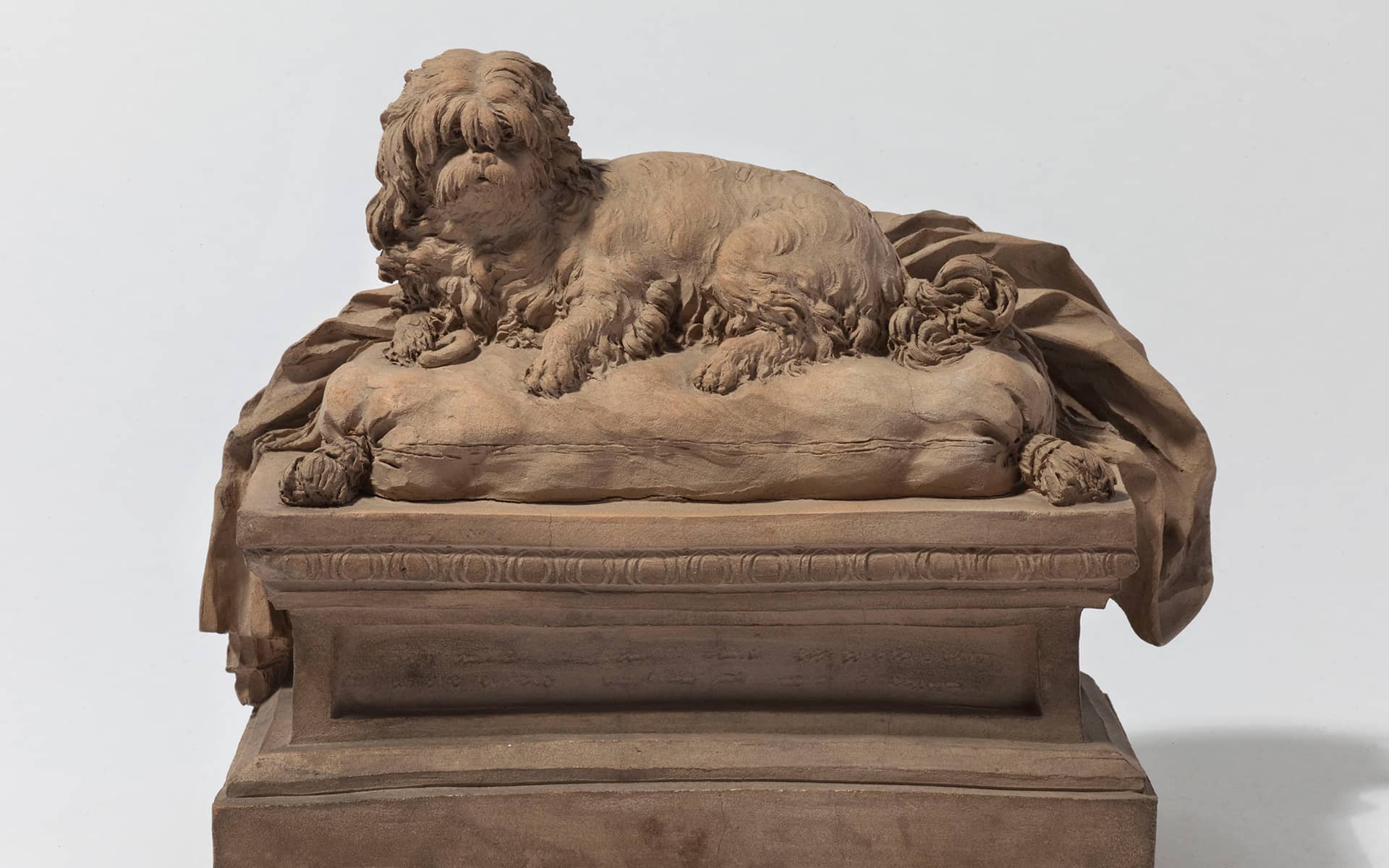
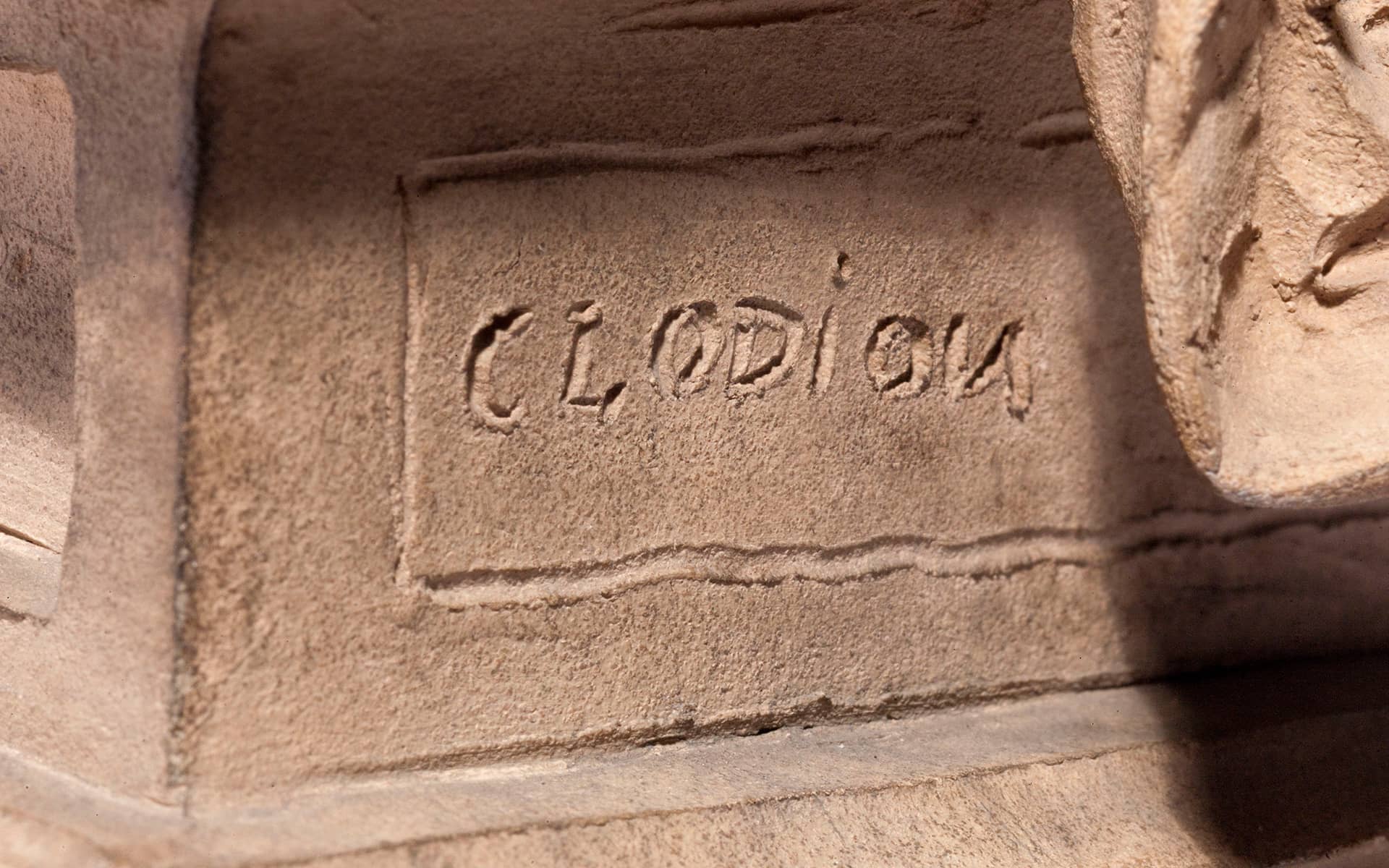
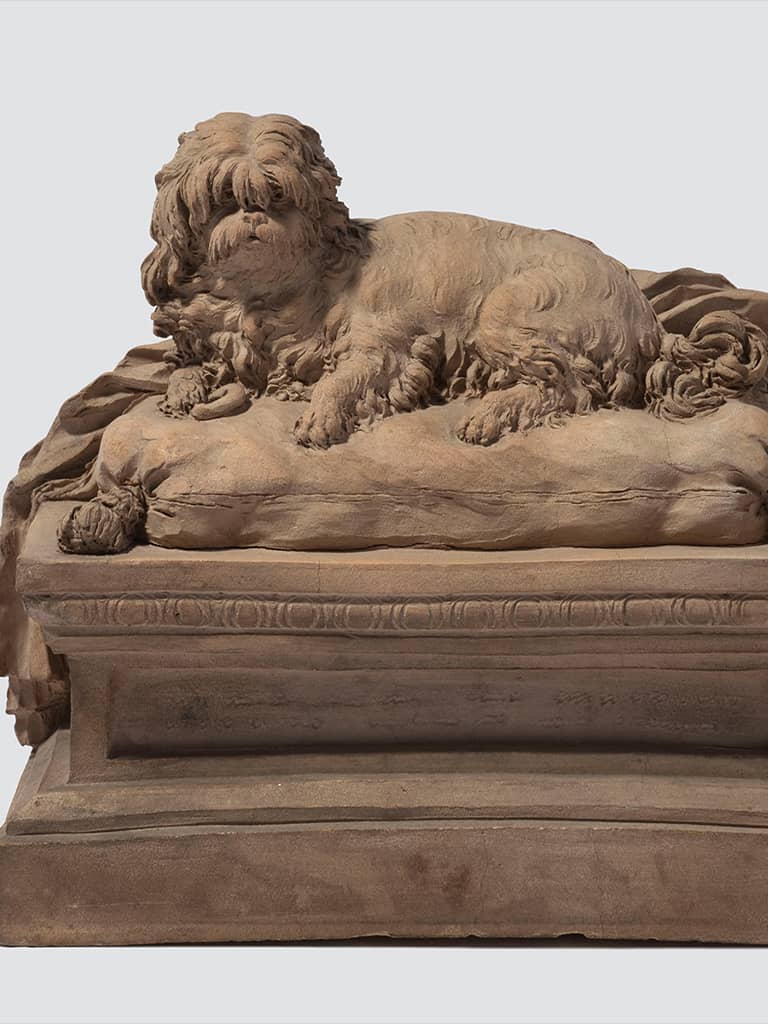
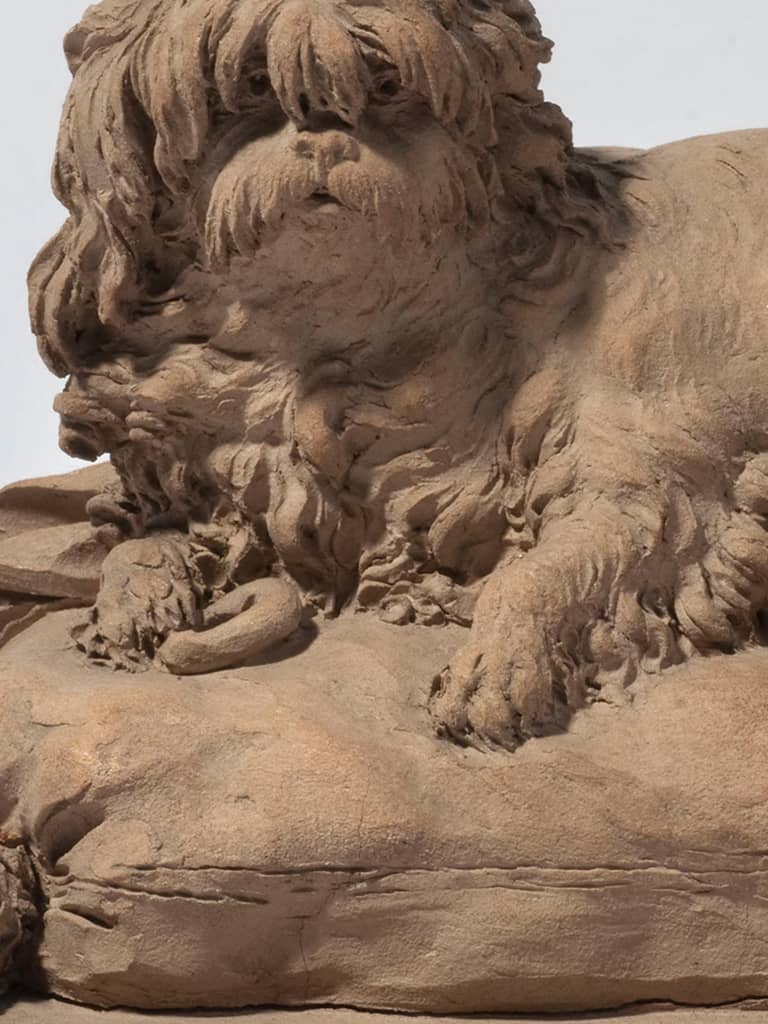
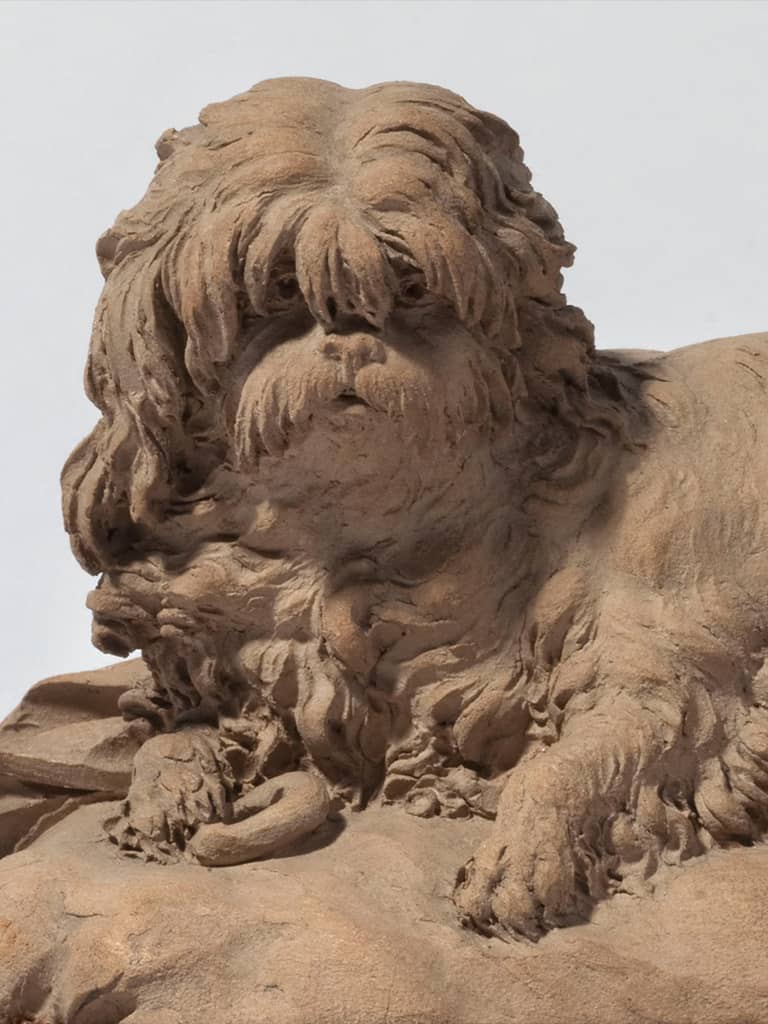
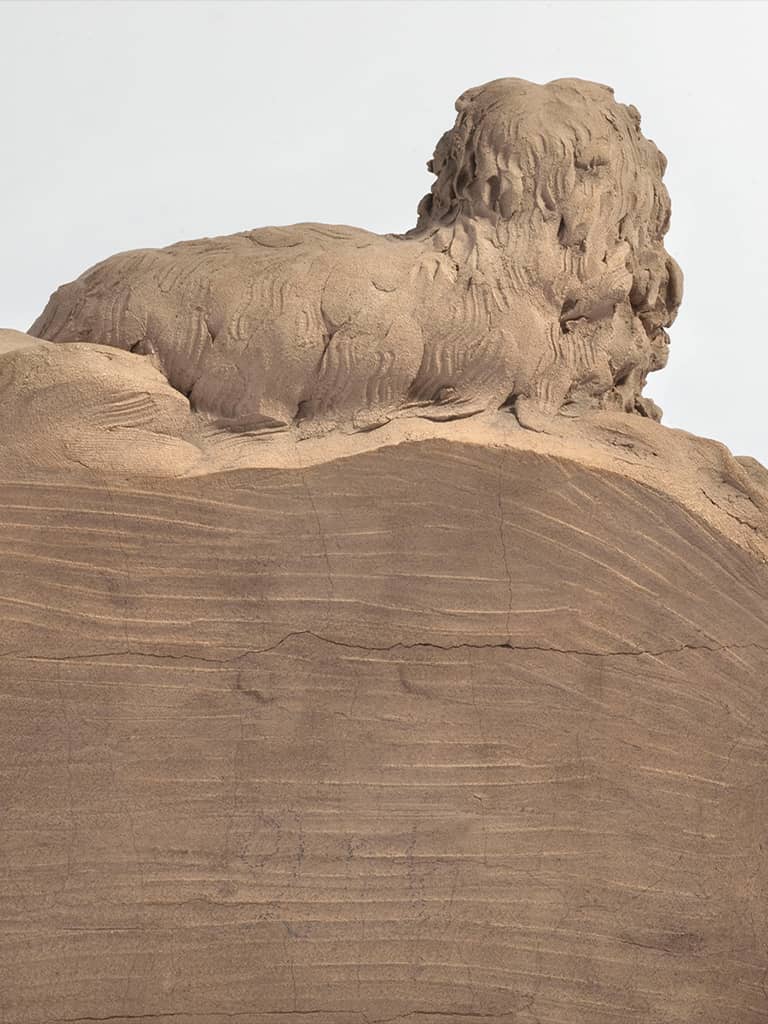
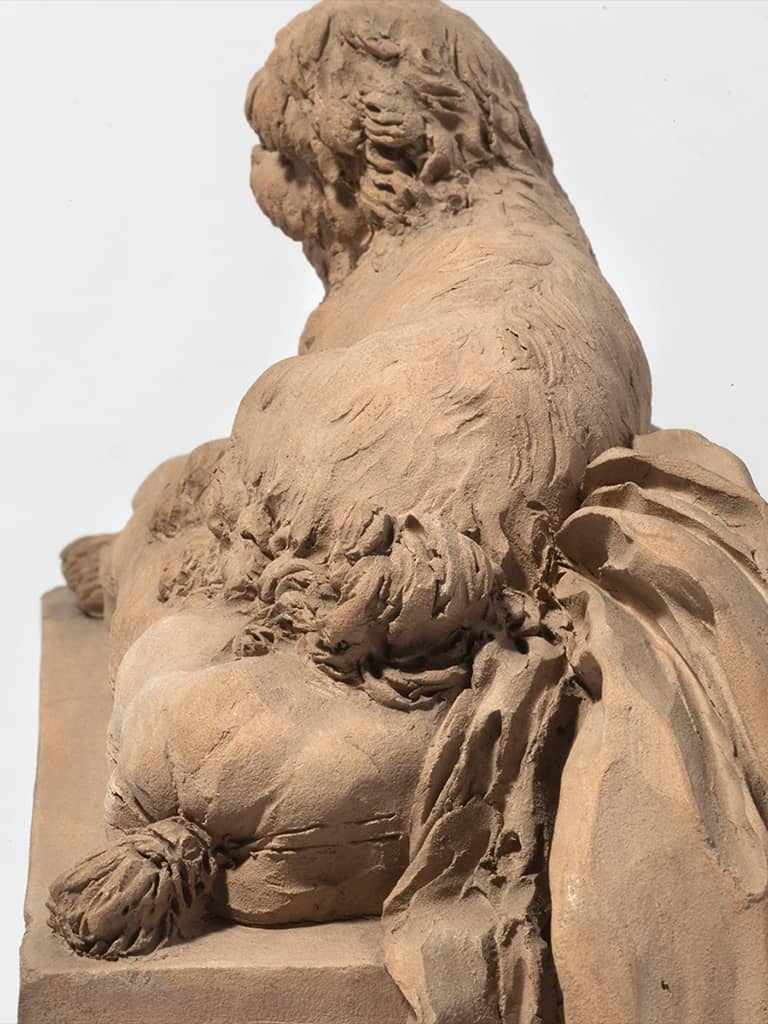
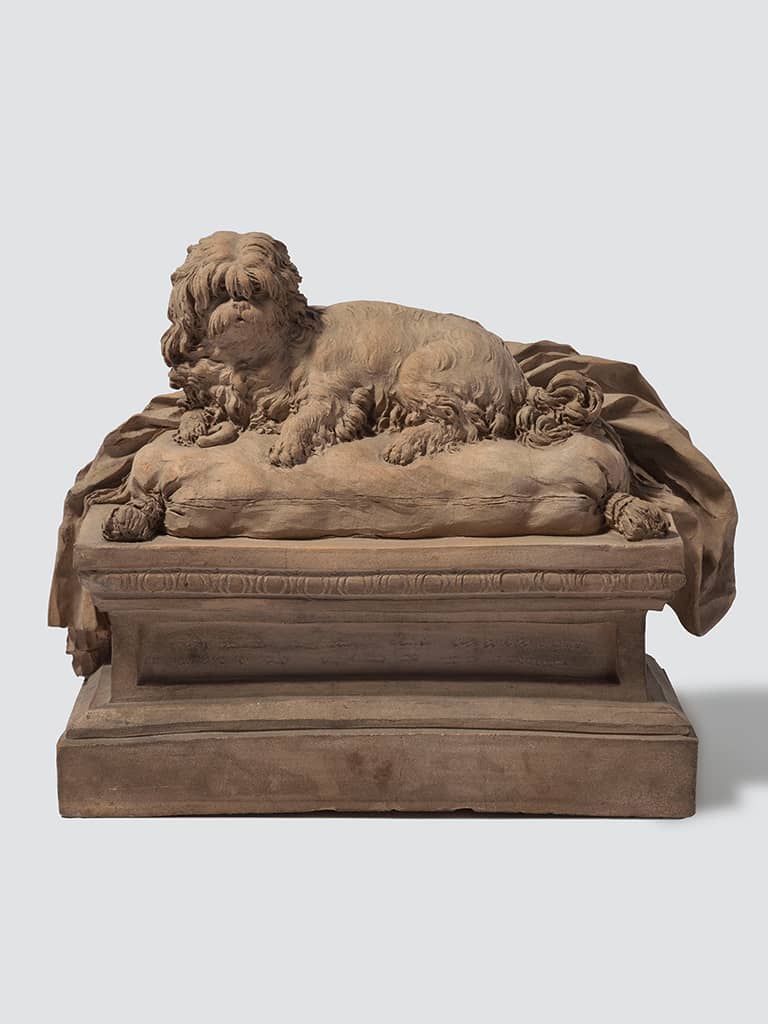
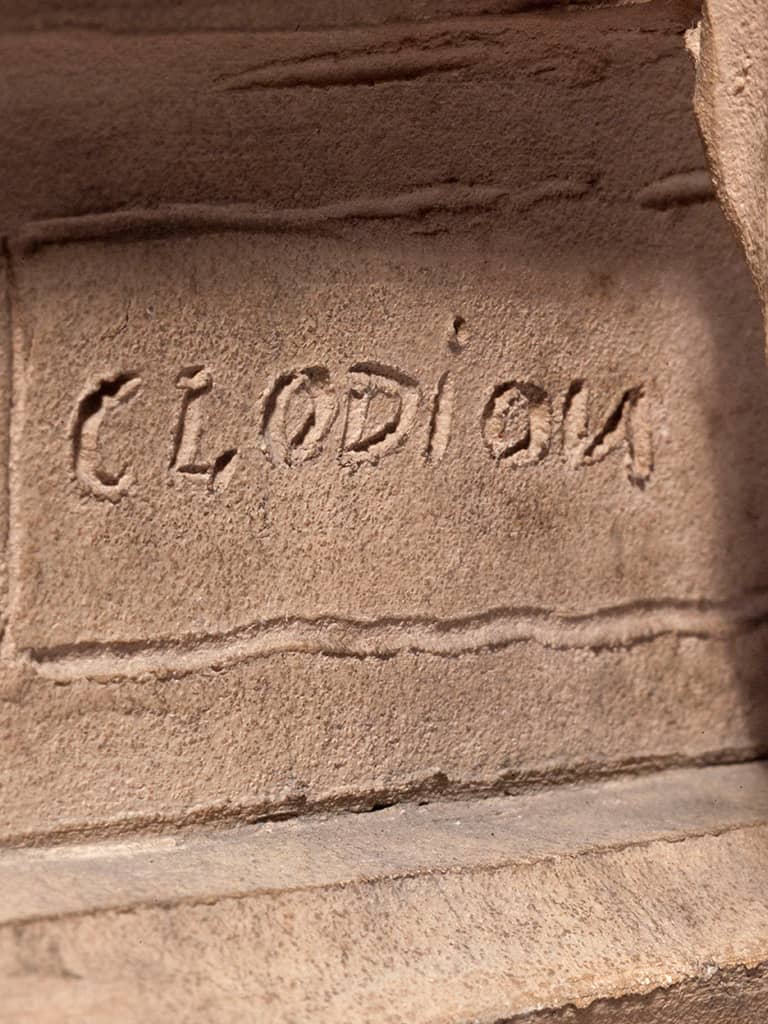
Ninette's gimblette
Delightful details bring this animal portrait to life – the gimblette (a round biscuit) under the dog’s right paw and the open eyes under the generous coat. Clodion's talent lay in his realistic treatment of the tightly-curled fur and the hollowed-out pupils we can observe beneath the fringe.
The dog has been identified as a Maltese, a small breed known for its dense, white, curly coat, popular with the elites of the 18th century for its easy-going nature.
The financier and art lover, Bergeret de Grandcourt, commissioned this miniature cenotaph from the Nancy sculptor, Clodion, in memory of his pet dog, Ninette. The subject demonstrates the infatuation of society at the end of the 18th century with domestic animals.
Associating the form of an ancient funerary tomb with a life-like representation of the animal, Clodion made several monuments of this type, including the Mausolée de Ninette (Nancy, Musée Historique Lorrain) and the Mausolée de Fifi (Ecouen, Musée National de la Renaissance).
These small monuments were perhaps used as preparatory models for larger tombs made from marble, common in Enlightenment Europe, or may have been decorative objects reserved for enthusiasts, like the mythological statuettes created by Clodion in the same period.
Clodion's animal terracottas take on a parodic aspect by playing on the clichés of funerary sculpture. The artist continues the tradition in an intimate vein with the high plinth where a false inscription imitating an epitaph is placed and his signature on the pedestal.